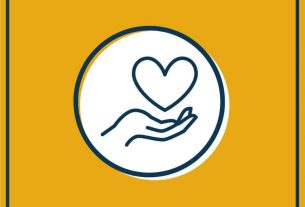**** Info via CFIA
Birds are now migrating, which means bird flu is more likely to spread among wild birds and domestic flocks. The risk of the virus being transmitted to humans is rare, but we should still take precautions!
Protect yourself and your animals and reduce the spread of bird flu:
✔️ avoid direct contact with wild birds and their droppings
❌ don’t feed wild birds, like ducks, geese or swans.
❌ don’t touch or pick up any dead or sick birds or other wildlife
❌ don’t feed pets (e.g., dogs or cats) any raw meat from game birds or poultry or allow them to consume (or play with) wild birds.
Fact Sheet – Avian Influenza
Avian influenza in birds
Avian influenza (AI), often called “bird flu,” is caused by the Type “A” influenza virus. This virus can affect several species of food-producing birds (chickens, turkeys, quails, guinea fowl, etc.), as well as pet and wild birds.
Avian influenza viruses can be broadly classified into 2 types, based on the severity of the illness caused in birds:
- low pathogenic avian influenza (LPAI)
- highly pathogenic avian influenza (HPAI)
Most avian influenza viruses are low pathogenic. These typically cause little or no signs of illness in infected birds.
However, highly pathogenic viruses can cause severe illness and death in birds.
Different strains of avian influenza
Avian influenza viruses are divided by subtypes based on 2 proteins found in the viruses: hemagglutinin, or “H” protein, and neuraminidase, or “N” protein. There are 16 H types and 9 N types which create a total 144 possible combinations.
The H5 and H7 subtypes of the virus are of particular concern, given the ability of these 2 H-types to mutate from low pathogenic to highly pathogenic after they infect domestic birds. These 2 H-types have been known to cause serious disease or mortality in domestic poultry, yet low pathogenic H5 and H7 viruses are quite common in wild waterfowl.
Different strains of the same type of virus can exist, particularly in different parts of the world. Such strains can have very different characteristics and structure. For example, the H5N1 strain that has been reported in various parts of Europe is low pathogenic and is distinctly different from the Asian strain, which is highly pathogenic.
Avian influenza in humans
Avian influenza viruses, such as the highly pathogenic H5N1 virus present in Asia, can, on rare occasions, cause disease in humans.
Transmission to humans has occurred when people have had close contact with infected birds or heavily contaminated environments.
Due to the potential for human infection, it is recommended that people working with poultry suspected of being infected with avian influenza, or in contact with such poultry, wear protective clothing. This includes, face masks, goggles, gloves and boots.
The Public Health Agency Canada also provides advice on precautions to be taken when handling wild birds.
Additional information:
- Advice on handling wild birds (PHAC)
- Avian Influenza and Poultry (Health Canada)
- Human Health Issues Related to Avian Influenza in Canada (Public Health Agency of Canada)
Where avian influenza is found
Avian influenza viruses have been found in Canada and around the world.
Environment and Climate Change of Canada provides information on avian influenza in wild birds, including where cases of avian influenza have been confirmed in Canada and where to report dead wild birds.
The Canadian Food Inspection Agency (CFIA) publishes reports on previous disease incidents in Canada.
Detailed information on the distribution of the H5N1 subtype and highly pathogenic avian influenza around the world is available from the World Organisation for Animal Health (WOAH; founded as Office International des Épizooties (OIE)).
What the clinical signs of avian influenza are
Some or all of the following clinical signs are evident in infected birds:
- a drop in production of eggs, many of which are soft-shelled or shell-less
- diarrhea
- haemorrhages on the hock
- high and sudden mortality rate
- quietness and extreme depression
- swelling of the skin under the eyes
- wattles and combs become swollen and congested
The incubation period of AI ranges from 2 to 14 days.
The signs of AI (or more commonly known as bird flu) are very similar to those seen with Velogenic Newcastle Disease and other poultry diseases.
How to diagnose avian influenza
Avian influenza should be suspected on the basis of clinical signs.
Laboratory testing is needed to confirm the presence of the avian influenza virus. Contact your local veterinarian or provincial veterinary laboratory for assistance.
How to treat avian influenza
There is no treatment for birds that have the disease.
Vaccinating the birds may play a role in reducing the spread of the disease but does not eliminate the virus.
How avian influenza is transmitted and spread
Wild birds, especially waterfowl, are natural reservoirs of influenza viruses. They are not normally affected by the disease, but can still transmit it to domestic birds.
The disease can spread to birds through contact with infected poultry and poultry products. It can also spread through contaminated manure, litter, clothing, footwear, vehicles, equipment, feed and water.
It is essential for commercial poultry producers to use strict biosecurity practices in order to prevent introduction of the virus to their flock. Farmers should take the following measures.
- Keep poultry away from areas frequented by wild birds.
- Maintains strict control over access to poultry houses.
- Make sure that equipment is cleaned and disinfected before taking it into poultry houses.
- Do not keep bird feeders or create duck ponds close to poultry barns because they attract wild birds.
- Maintain high sanitation standards.
Avian influenza in pets
from avian influenza in Canada
The CFIA imposes strict regulations on the import of animals and animal products from countries where avian influenza is known to occur. These regulations are enforced through port-of-entry inspections done either by the Canada Border Services Agency or the CFIA.
The CFIA has enhanced its avian influenza surveillance for commercial poultry flocks in Canada with the launch of the Canadian Notifiable Avian Influenza Surveillance System (CanNAISS).
This surveillance program was developed in collaboration with provincial and territorial governments, poultry farmers and other industry representatives.
The Government of Canada, provincial and territorial governments, and animal health experts also conduct an annual surveillance program of avian influenza in wild birds. Through this program, live and dead birds are sampled and tested for avian influenza viruses.
Highly pathogenic avian influenza and low pathogenic avian influenza by subtypes H5 and H7 is a reportable disease under the Health of Animals Act and Regulations. This means that all suspected cases must be reported to the CFIA for immediate investigation by inspectors.
Under the Avian Influenza Hazard Specific Plan, the CFIA responds to both highly pathogenic and low pathogenic H5 and H7 viruses by reporting disease outbreaks to the WOAH, establishing quarantines, ordering the humane destruction of poultry, conducting trace-out activities, overseeing the cleaning and disinfection of premises, and verifying that the affected farms remain free of avian influenza according to WOAH standards.
How the CFIA responds to an outbreak of avian influenza in Canada
Canada’s emergency response strategy to an outbreak of avian influenza would be to eradicate the disease and re-establish Canada’s disease-free status as quickly as possible.
The CFIA’s AI emergency response strategy includes the following measures:
- the humane destruction of all infected and exposed animals
- surveillance and tracing of potentially infected or exposed animals
- strict quarantine and animal movement controls to prevent disease spread
- strict decontamination of infected premises
- zoning to define infected and disease-free areas
Owners whose animals are ordered destroyed by the CFIA may be eligible for compensation.
What travellers can do to help protect Canadian livestock from an outbreak of avian influenza
While out of the country, travellers should avoid visiting areas where they may come into contact with live birds, including
- poultry farms
- live bird markets
- any other area where birds congregate
This is most important in countries that are experiencing an outbreak of highly pathogenic avian influenza.
If you are in contact with live birds infected with the AI virus, the virus may persist on your clothing, footwear and in your hair. Take appropriate personal hygiene measures, such as the following.
- Wash your hands
- Shower
- Wash all of the clothing you had with you while abroad
- Clean and disinfect your footwear
When you return home, do the following.
- Avoid contact with farmed animals (including poultry), zoo animals or wildlife for 5 days after you return if you were exposed to similar animals while you were abroad.
- Do not visit Canadian farms for 14 days if you visited a farm or had contact with wild birds while abroad.
- Be sure the footwear you wore to the farm or when you had contact with wild birds is disinfected and your clothing is washed thoroughly and dried at a high temperature.
- Complete the appropriate areas of your Customs Declaration Card – PDF (45 kb) regarding farm visits.
- Ensure all birds and poultry products you bring into Canada are eligible for entry. Declare all animal products upon arrival.




